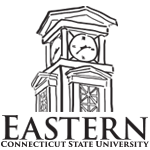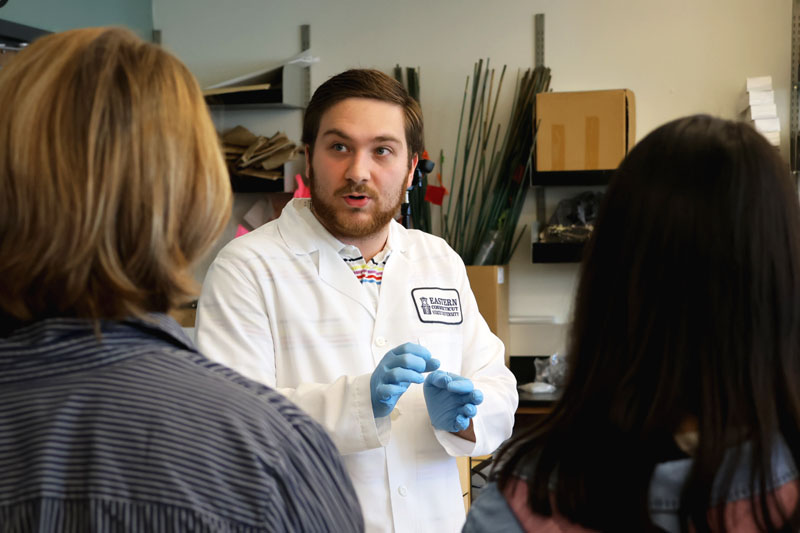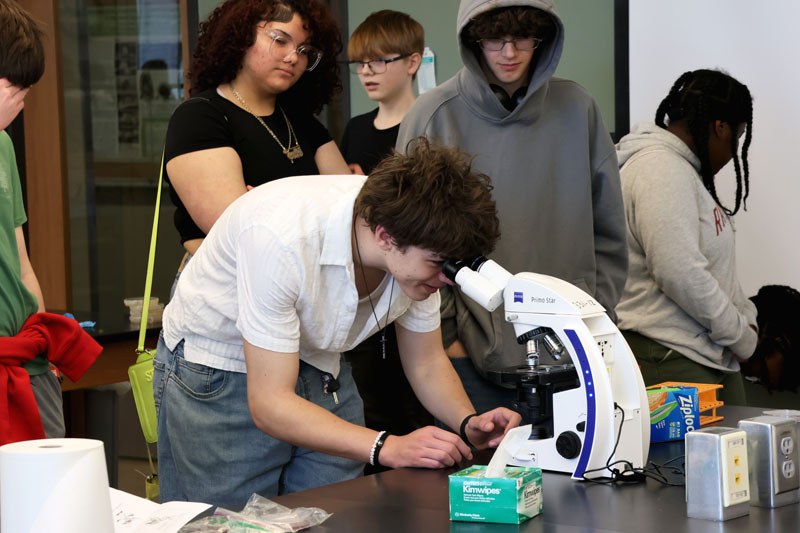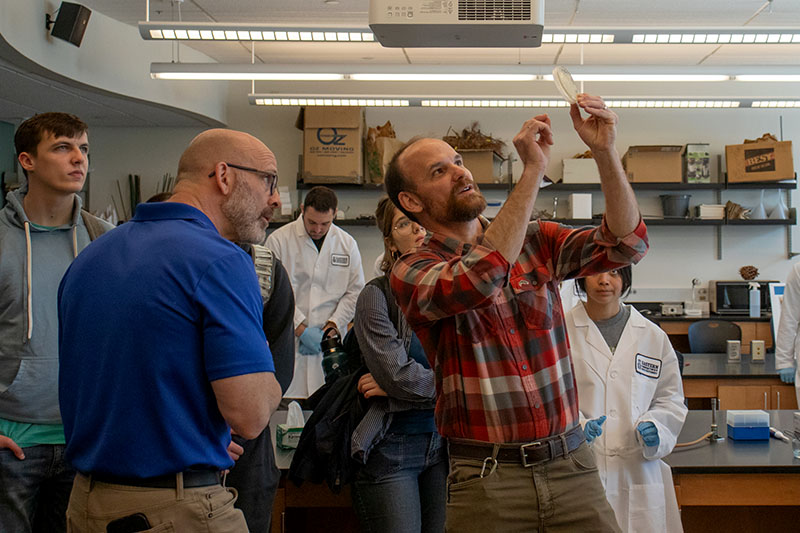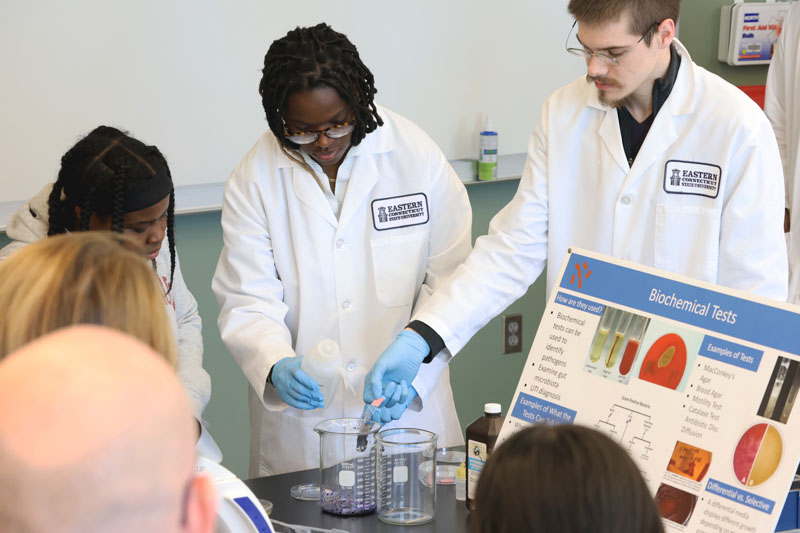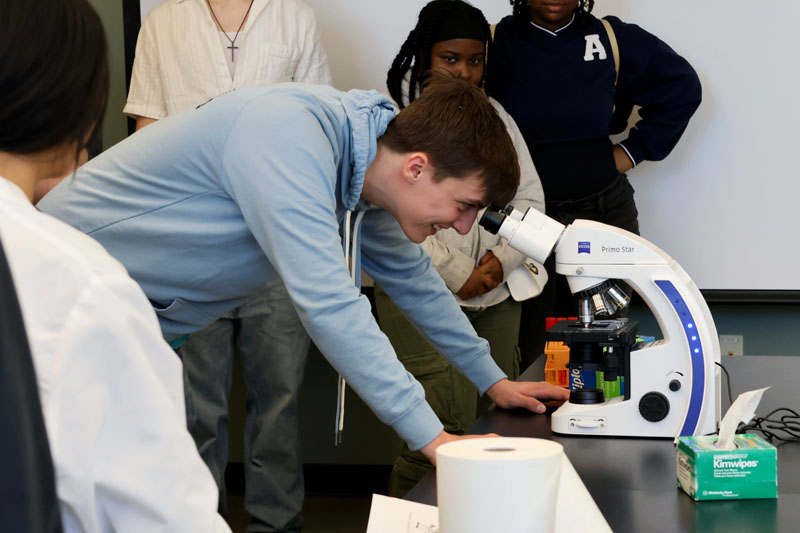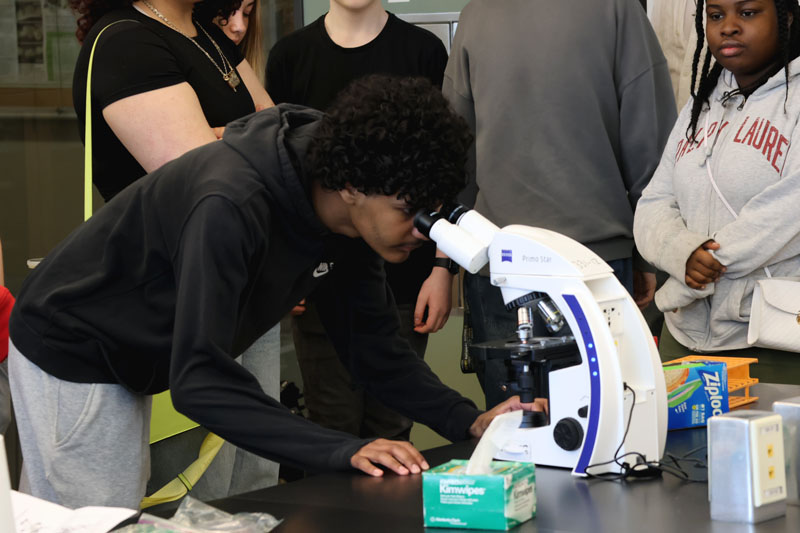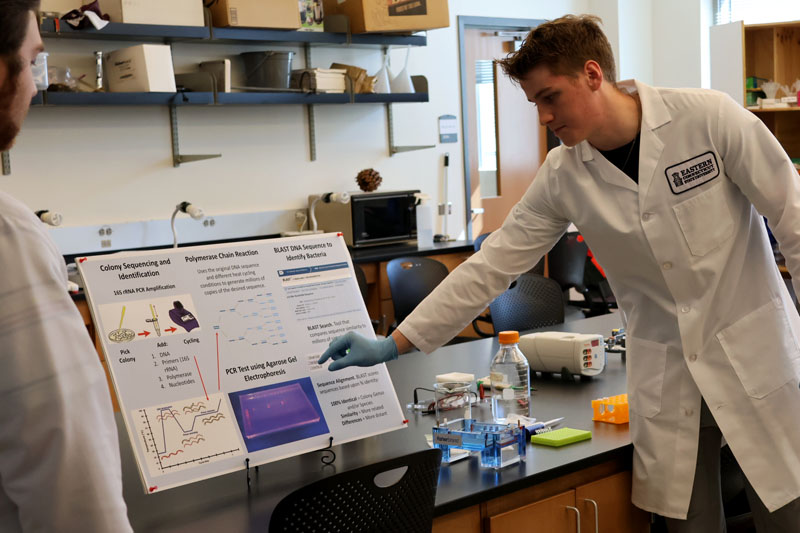- Apply
- Visit
- Request Info
- Give
Biology department continues antibiotic crowd-sourcing effort
Eastern hosts Norwich Free Academy for Tiny Earth Day
Written by Kyle Berson '26
Published on May 05, 2025
High school students from Norwich Free Academy (NFA) visited Eastern on April 23 for “Tiny Earth Day,” a global project that aims to inspire students in science and address antibiotic resistance through student-sourced antibiotic research.
The high schoolers provided soil samples to Eastern’s biology department as part of the day’s activities, with Eastern students demonstrating related laboratory techniques. Biology Professor Jon Hulvey said their soil samples may lead to the discovery of three new species of bacteria, and possibly a new antibiotic drug for medicinal use.
According to its website, Tiny Earth is a global network of students and instructors dedicated to crowdsourcing antibiotic research and discovery. The initiative drives antibiotic discoveries through open-source, community research to address the diminishing global supply of effective antibiotics and the lack of research from major pharmaceutical companies. More than 800 instructors and 16,000 students from around the world contribute research to the network.
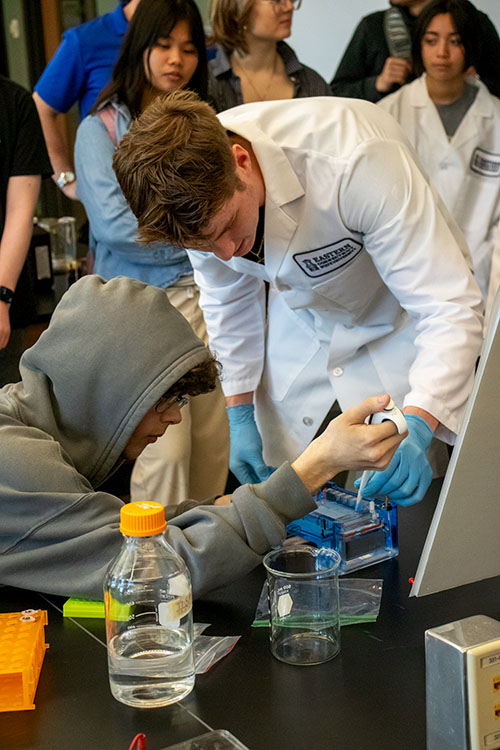
This year marks the third year NFA science teacher Jason Croteau has brought his students to the biology labs at Eastern. Hulvey originally reached out to Croteau as a part of his class “Microbes and Disease.” They agreed to send soil samples to Eastern for analysis.
Over the last three years, NFA students have had the opportunity to be involved in groundbreaking research, and the program even sparked an independent study. “Last year, I had a student do an independent research project that they presented at the Connecticut Science Fair,” said Croteau. “She was looking to see if (certain) species of mushrooms had antimicrobial properties.”
Discoveries beneath the surface
“There is a war going on in the soil,” said Hulvey. He explained that different species of soil-dwelling bacteria compete for survival and control of nutrients, using antibiotics as weapons: “Antibiotics kill the other bacteria.”
Hulvey also noted that many antibiotics used in medicine today are derived from soil samples such as the ones analyzed at Eastern’s Tiny Earth Day.
Eastern students demonstrated the lab processes used to make antibiotic discoveries to the NFA students. The biology students explained how individual colonies of bacteria are grown from the sample, DNA extraction and analysis, and the properties examined through DNA sequencing and property testing.
During the demonstrations, high schoolers received hands-on experience with various processes, such as transferring bacteria colonies, examining them through microscopes, observing antibiotic property testing, and running their colony’s DNA sequence through a professional database.
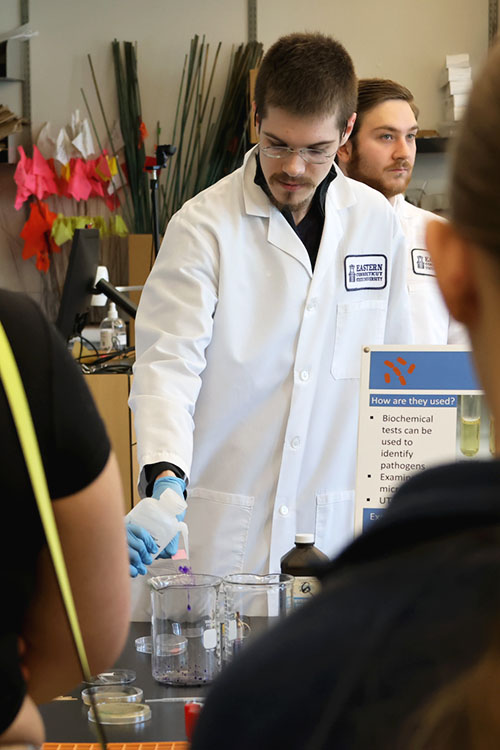
Speaking of the high school students' preview of the labs at Eastern, Hulvey added, “It serves as a recruiting tool.” He pointed out that getting high schoolers into a college lab could inspire them to pursue a career in biology in the future. “They get a feel for the biology major and how we do community research in microbiology.”
Undergraduate research
Following the lab demonstrations, NFA students got to view presentations of a diverse array of undergraduate biology research from Eastern students.
Senior Alexa Boone presented her findings on the presence of microbiomes in the hippocampus. The brain, typically considered sterile, was discovered to have small microbiomes in the hippocampus. Boone hypothesized that these microbiomes may originate from the gut microbiome through parts of the nervous system.
Senior Nancy Avalos shared her research on parasitic fungal infections in cicadas. Massospora cicadina infects the insect's reproductive system and causes its organs to detach.
“I’m trying to see genetic similarities between broods,” she explained, “and how the fungus is making its way to different states.” With several genetically diverse broods set to emerge across the nation this year, Avalos’ research could help further understand the biology and intermixing of cicada broods.
In addition to lab tours and research presentations, visiting high schoolers had the opportunity to tour the campus, meet Eastern faculty, and enjoy lunch on campus.
